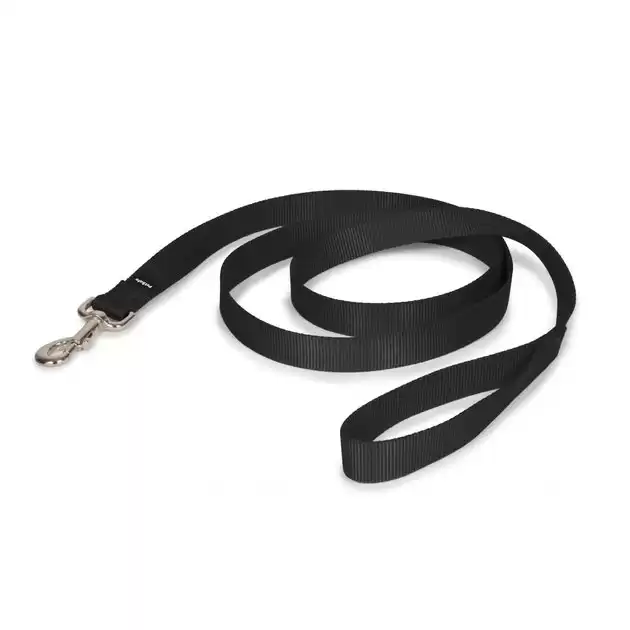We spend so much time as owners trying to communicate with our dogs. We teach them the meaning of words and commands and try our best to anticipate their needs. Learning their behavior and body language is critical for owning a dog. It helps alert us when they aren’t feeling well if they are anxious, frustrated, excited, or bored.
Barking is a form of communication that dogs use to interact with each other and their owners. There are different barking pitches and body language they do with the bark to alert us to different things. Sometimes a bark can be a happy hello, and at times it can be a warning that someone is too close to their territory. They use pitch, pauses, and different stances to communicate various emotions and messages to whoever is on the receiving end.
While barking is normal for dogs, excessive barking can be a familiar issue an owner may face with their pups. People who rent or own houses know the concern that their neighbors may eventually file a noise complaint. When training a dog not to bark, your first step is to identify why they are barking and then implement a few methods we list below.
Excitement
Have you ever been in the car with your dog, passing by one of their favorite places, and suddenly they are barking in the back? Dogs bark to show excitement, often in situations where you first come home or when you grab their leash to bring them on a walk. When they are excited, their bark is typically higher-pitched, their tail wags, and their ears perk up.
Even though excitement barks aren’t typically the cause of the excessive barking, it can be overwhelming when you have company over or when you come home from work. Try to fight the impulse to greet them when they are happy dancing and barking at your arrival. You want to wait until they have calmed down when you open the door before greeting them. Petting them while barking encourages the behavior to continue every time you come home.
Solution
You need two people for this training method. One person should stand inside to keep your dog in their designated sit spot, and another person should walk through the door. In the beginning, it’s easier to keep them on a leash when someone is entering your home. Tell them to sit and stay. When the person walks through if they get up or bark to greet them, put them back into a sit and have the person leave and repeat. If they sit and don’t bark, give them a treat.
When people enter your home, leash your dog before they walk in and put them in a sitting position. Instruct the people who enter not to greet them if they are barking and acting excited. When they calm down, then they can pet them to say hello.
No one in the house that enters should pet your dog while they are excited and barking, nor should they let them out to go outside or take them for a walk. If you grab the leash to take them out and they start to bark, make them sit and wait for them to calm down. Once they are calm, put the leash on and walk them out of the house. When training them, it’s essential to be consistent and never reward them for barking.
- Cost-friendly
- Made from soft nylon with a comfortable loop handle
- Comes in seven colors
- The swiveling metal clasp prevents tangling
Attention Seeking or Boredom
Barking can be a dog’s way of getting your attention or letting you know they are bored. In both cases, the bark will be a singular bark with pauses in between. They might even bring a ball over to you and bark at you for you to pick it up and throw it.
I know how cute it is when your dog begs for attention, especially if they are doing the play bow, where their behind raises high, and their tail is wagging like crazy. Fight the urge to give your dog attention at that moment. The same thing goes for food. Don’t give in if the dog is barking at you for a treat, or maybe it’s dinner time, and your dog is demanding their kibble!
If encouraged, attention-seeking behavior or even behavior out of boredom can become a habit and a long list of destructive behaviors. They shouldn’t learn that if they exhibit specific behavior, the dog gets what they want.
Solutions
Exercise, exercise, and exercise! Mental and physical stimulation for dogs is a must. Dogs are routine creatures that need to be exercised daily. Take them out for long walks, play fetch with them outside, and get them puzzle toys that will help keep them mentally stimulated. A well-exercised and mentally stimulated dog is easier to train and will behave better than a dog that needs to release some energy.
The best way to handle attention-seeking behavior is not to give them a reaction. Any form of response, even if it’s to yell at them, is still confirming the behavior. When they are barking at you for food or attention, ignore them, and reward them when they stop the behavior. That will teach them that they won’t get anything from their efforts when doing something inappropriate.
- Level two game that challenges your pup
- Has four layers of rotating discs
- Your dog needs to complete multiple steps to earn a treat
- Very easy to clean
Territorial Or Fear
Territorial barking is a defensive type of bark that dogs resort to when they feel like someone is coming too close to an area they consider their territory. A source of your dog’s excessive barking could be them barking every time someone walks by your yard.
Alert barking has a couple of stances. One is a defensive or aggressive stance that includes their ears perked up high, hackles raised, tail straight, and standing at full attention. You might see them in another position when they are alert, barking with their head lowered and their tail tucked. If your dog barks in the second position, it could be barking out of fear or anxiety. Often, the dog learns if they bark at something that scares them, it will go away.
If you feel like your dog’s territorial barking could turn into a bite if someone enters your yard or house with them, seek help from a professional dog trainer or Behaviorist. Aggression toward people is challenging to train. You don’t want to worsen the problem, so it’s crucial to get help from someone who has experience in dog aggression.
Solutions
Most people will suggest blocking your dog’s view from seeing anyone approaching their territory, but that doesn’t teach your dog anything and won’t stop them from barking when they hear something. Teach your dog the command “Quiet.” You can put your dog on a longer leash and get a bag of their favorite treats, and bring them to a window in your house. Sit at the window with them and look for people approaching. When someone walks by, and your dog starts to bark, say “Quiet” once and wait. If they stop and turn to you, give them a treat.
When you start training them, if they begin to bark, and won’t stop, walk them away from the window further into the room. If the dog stops barking, give your dog the treat. Sometimes when first training them, you might need to start from a greater distance in the house versus right in front of the window, the better they do and the more they catch on, the closer you can move them to the window.
When teaching them “Quiet,” only say the word once and reward them the second they stop barking. You can then start extending the time your dog must be quiet before you give the dog a treat. Start at one second, and then begin slowly lengthening the amount of time. Start rewarding the dog intermittently once you feel like they have picked up on the command, and stop barking altogether when you say the command.
Separation Anxiety
A common reason that dogs can excessively bark is due to separation anxiety. When you leave the house, and they bark the entire time you are gone, it’s because they are anxious. In most cases, separation anxiety has other symptoms that come along with it, like destructive chewing, trying to escape the house, and urinating in the house. When a dog barks out of anxiety or becomes a compulsive behavior, they resort to barking to soothe themselves. A veterinarian or a boarded behaviorist should evaluate them.
Excercise before leaving your pet alone does help with separation anxiety, but it isn’t the entire solution. Training a dog to be more confident when they are alone most often needs guidance from a professional, and they typically will need medication to help keep them calm during training.
Pain or Medical Condition
There are cases where excessive barking isn’t a behavioral problem and is due to a medical condition. Often, if your dog is barking because of an injury, it will be a whining bark or a yelp. If you notice your dog barks when you touch a specific area or cries out randomly, bring them to the Veterinarian to be evaluated.
Older dogs, if they are barking for no reason and seem to have on and off disorientation, it could be a sign of Canine Dementia. Canine Cognitive Dysfunction can happen in senior dogs. It’s typically gradual and then worsens over time. To help prevent your dog from developing Canine Dementia as they get older, give them toys to help with mental stimulation and feed them a healthy senior diet with supplements that help support cognitive health.
Bark Collar
There is a lot of controversy about using a bark collar. Some trainers think that using one on a fearful dog can confirm their fear and create your dog to act out aggressively. Other trainers swear by them and use them often when training dogs. Another argument is that they are inhumane. There are a lot of different products on the market, like collars that vibrate or will beep as a warning to your dog not to continue the behavior. Training with positive reinforcement is a better training method. It’s more challenging when you have a dog that isn’t food motivated. If your traditional training methods aren’t working, consult with your Veterinarian and see if a vibrating collar would be recommended.
- Uses pheromone technology
- Helps alleviate problem behaviors
- Can be used for puppies and dogs of all ages
- Provides a humane, non-pharmaceutical solution to stress-induced behaviors
Be Patient
Training a dog requires a lot of patience. Success doesn’t often happen overnight. When teaching your dog not to bark excessively, yelling or punishment will only worsen the situation. If your dog barks and you yell at them to be quiet, it causes more stress on your dog, which overstimulates them and encourages them to bark more. When telling them to be quiet, say it once in a firm voice, and reward them when they stop. If standard training methods aren’t helping, consult with a certified trainer or Behaviorist to help you.
Many different reasons could be causing your dog to bark. Understanding your pet’s behaviors and body language will help you train them.
Ready to discover the top 10 cutest dog breeds in the entire world?
How about the fastest dogs, the largest dogs and those that are -- quite frankly -- just the kindest dogs on the planet? Each day, AZ Animals sends out lists just like this to our thousands of email subscribers. And the best part? It's FREE. Join today by entering your email below.
Thank you for reading! Have some feedback for us? Contact the AZ Animals editorial team.











